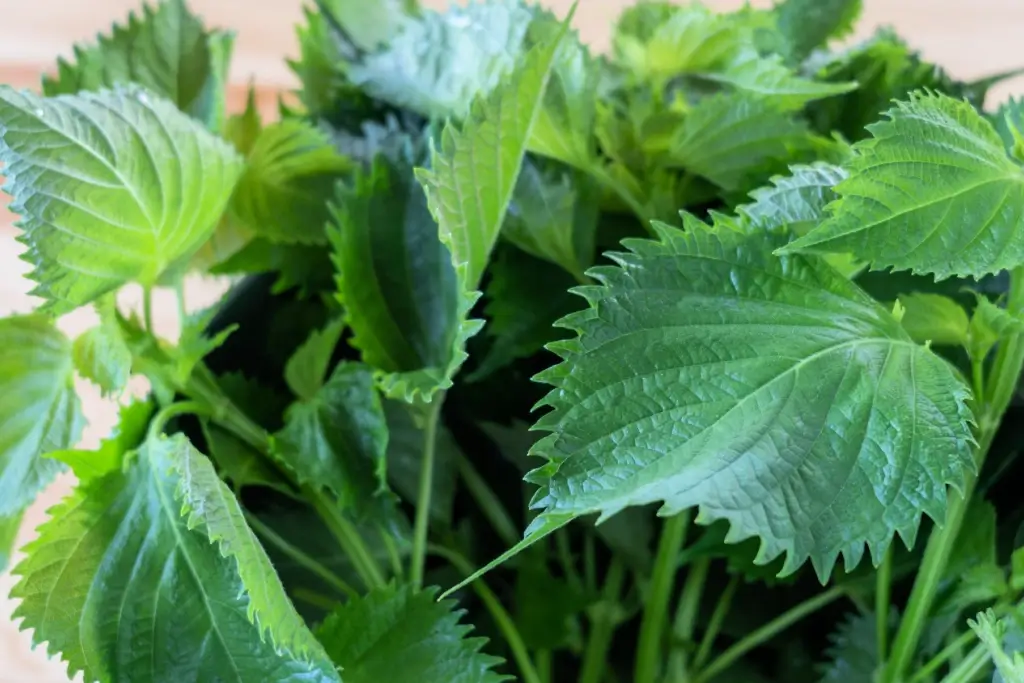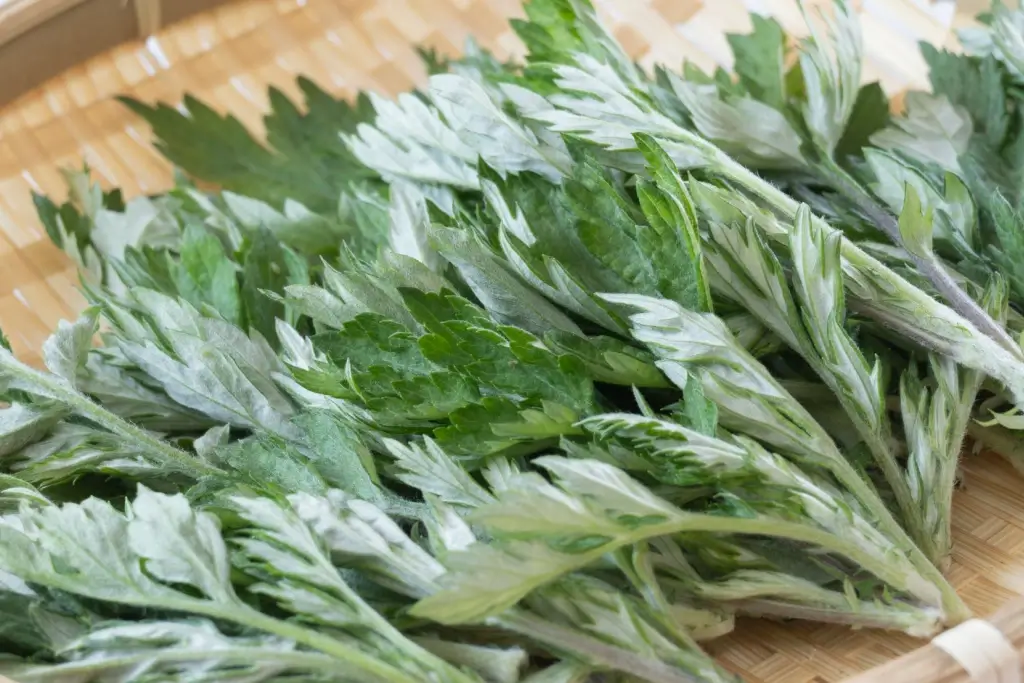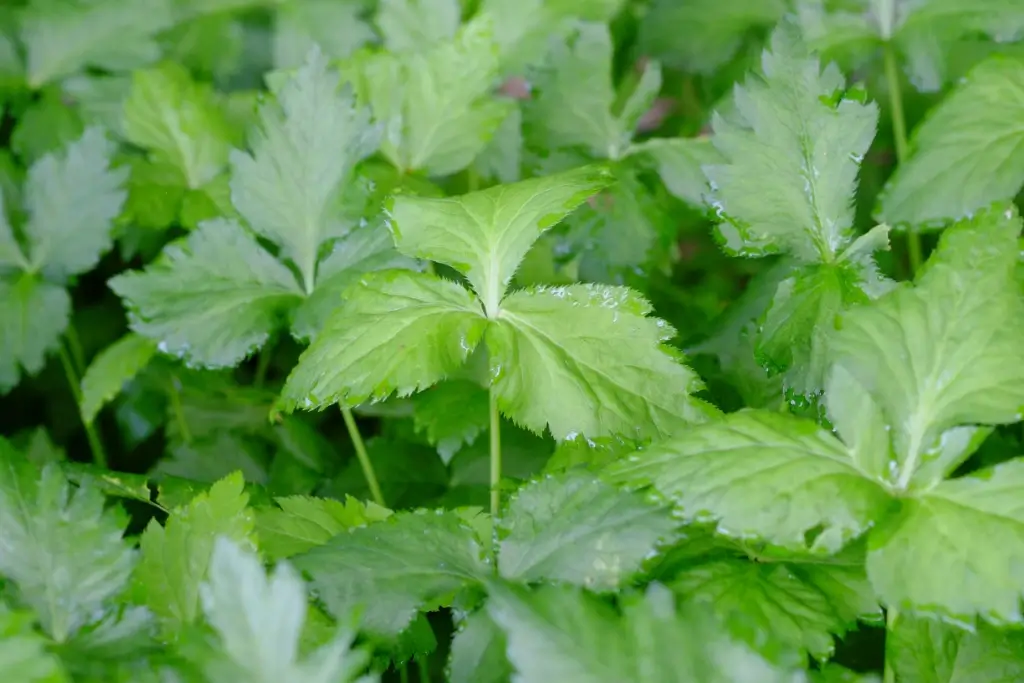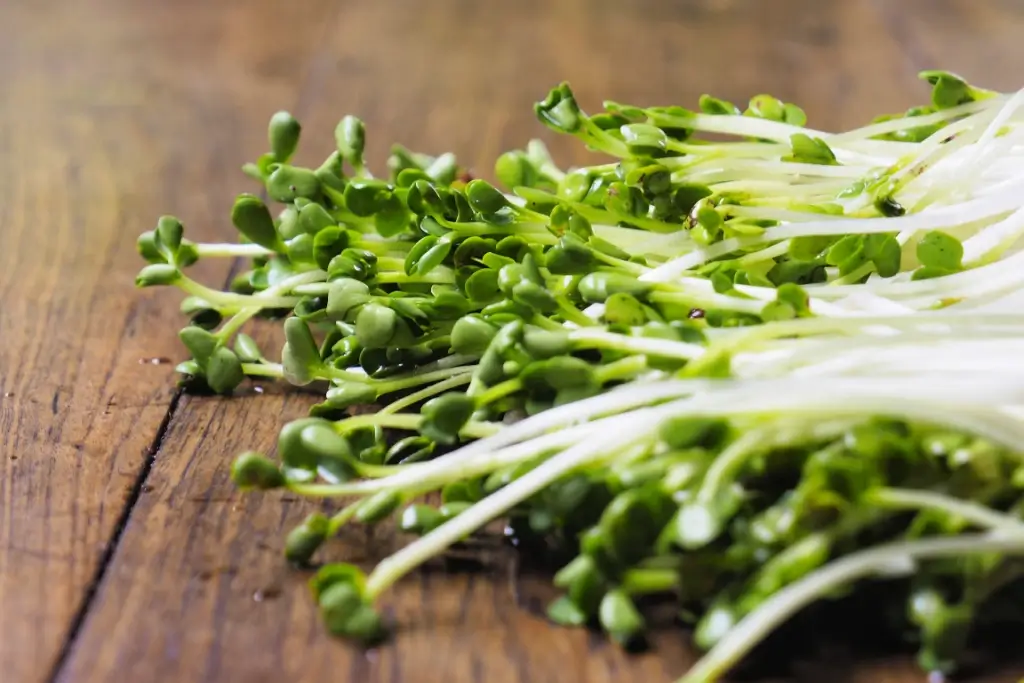Japanese herbs are an essential part of the country’s culinary tradition. One herb that stands out is kaiware, widely used in Japanese cuisine, thanks to its sharp taste and crisp texture that add a fresh and spicy kick to dishes. Other herbs like shiso, yomogi, kuromoji, and mitsuba enhance meals. Each herb has unique uses and benefits, making them worth exploring in your kitchen!
Table of Contents
ToggleKaiware
Kaiware, or daikon radish sprout, is a quick-growing herb with a sharp, peppery flavor. It is famous for its bright green leaves and crisp stems, which add a refreshing texture to dishes. Although small, kaiware packs a punch with its semi-sweet and spicy notes. It is popular in Japanese cuisine because it balances rich or fatty flavors.

People usually consume kaiware raw. It’s a staple in salads, providing a crunchy contrast to other vegetables. In sushi, kaiware is a popular garnish or rolled inside for a spicy flavor. It can also be in sandwiches and soups, whose texture and sharpness add complexity. If you want to keep the spiciness down, you can cook them by adding them to stir-fried dishes.
Shiso
Shiso, or perilla leaf, is an herb with a distinctive taste that combines mint, basil, and anise. The large, vibrant shiso leaves come in green and red varieties. Chefs frequently use fresh green shiso to pickle red shiso or use it to dye foods like umeboshi (pickled plum). Cooks and food enthusiasts cherish the herb for its refreshing aroma and slightly tangy flavor. Moreover, shiso provides a healthy boost, packing significant amounts of vitamins A and C that can enhance any meal.

Shiso leaves appear in various dishes in Japanese cooking. Chefs commonly wrap green shiso around sushi or use it as a garnish for sashimi. They also chop the herb and sprinkle it over noodles or rice to provide an aromatic lift. Culinary experts use red shiso in pickling, which gives umeboshi its characteristic red color and tangy taste. Shiso’s unique flavor makes it a favorite for infusing oils or teas!
Yomogi
Yomogi, or Japanese mugwort, is an earthy herb with health benefits. Its leaves are deep green and slightly bitter, making it a key ingredient in sweet and savory dishes. Yomogi is famous for its role in yomogi mochi, where its herbal flavor beautifully balances the rice cake’s sweetness. For centuries, traditional Japanese herbal medicine has valued the herb for its powerful detoxifying properties.

In Japanese cuisine, yomogi is often used in soups to provide a subtle herbal flavor that complements broths and vegetables. Yomogi may also support digestion and circulation. Yomogi tea is another popular choice, offering a calming drink with a mild bitterness. Some cooks use dried yomogi as a seasoning for rice or noodle dishes. Its versatile flavor allows it to work in both traditional and modern recipes.
Are you looking for some Japanese snacks that may feature traditional herbs? Check out Sakuraco! Sakuraco delivers traditional Japanese snacks, teas, and sweets from local Japanese makers directly to your door so you can enjoy the latest treats directly from Japan!
Kuromoji
Kuromoji is a lesser-known herb harvested from the branches of the kuromoji tree. Its name means “black characters,” referring to the distinctive dark lines on its bark. This herb is best known for its delicate aroma, which is slightly woody and sweet. In Japanese culture, kuromoji is often used in tea ceremonies for its calming and refreshing qualities. Its mild, soothing flavor makes it a favorite for herbal teas and natural remedies.

Kuromoji tea pairs well with light desserts like wagashi or traditional Japanese sweets. Its subtle fragrance complements the sweetness without overpowering the dish. Some chefs use kuromoji as a flavoring for syrups or cocktails, enhancing drinks with a unique herbal note. It is also used as an ingredient in sauces or glazes for meats, where its aroma adds depth.
Mitsuba
Mitsuba, meaning “three leaves,” is a Japanese herb that resembles parsley but has a milder flavor and citrusy notes. Its delicate stems and vibrant green leaves make it a visually appealing addition to dishes. Mitsuba’s flavor is light and refreshing, with a hint of grassiness that complements a wide range of foods. Due to its usefulness and subtle taste, it is a common herb in Japanese home cooking.

It’s frequently used as a garnish for soups, such as miso soup or clear broth soups. It adds a pop of green and a hint of freshness to these comforting dishes. The herb is also used in rice dishes, like chirashi sushi, whose citrusy notes brighten the flavors. Mitsuba can be chopped and added to salads or used whole to decorate bento boxes. Its low-key flavor and attractive appearance make it a staple in Japanese cuisine.
Why should I try kaiware?
Japanese herbs are worth trying because they add unique flavors and textures to your meal. Kaiware’s peppery spice brings a fresh flavor to salads, sushi, and soups, while shiso offers a mix of mint, basil, and anise that enhances everything from noodles to teas. Yomogi adds earthy notes to desserts and soups, kuromoji offers calming, aromatic tea experiences, and mitsuba’s mild citrus flavor brightens rice dishes and soups!
These herbs also provide numerous health benefits. Kaiware is rich in vitamin C and antioxidants, shiso supports skin and immune health, and yomogi has detoxifying properties. Meanwhile, kuromoji offers soothing qualities perfect for relaxation, and mitsuba supports bone health with its high vitamin K content. They’re an excellent way to combine creativity with nutrition! Have you tried these herbs before? What do you like to eat with them? Share your favorite ways to use them in the comments below!










